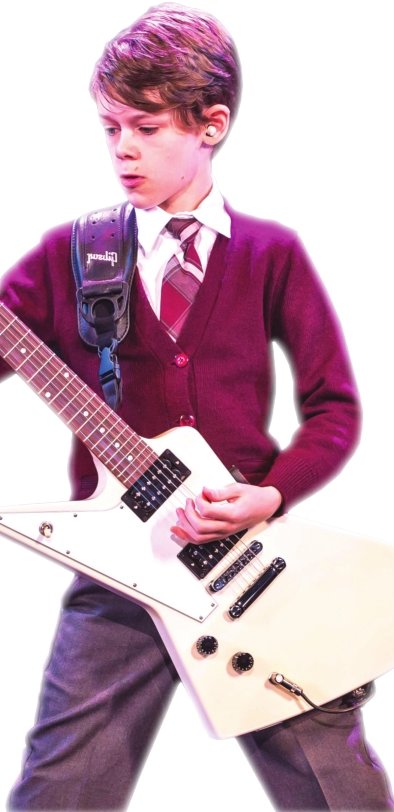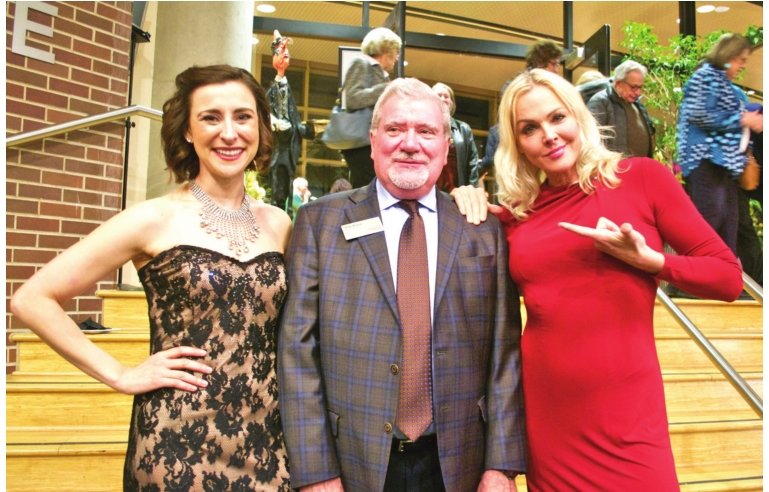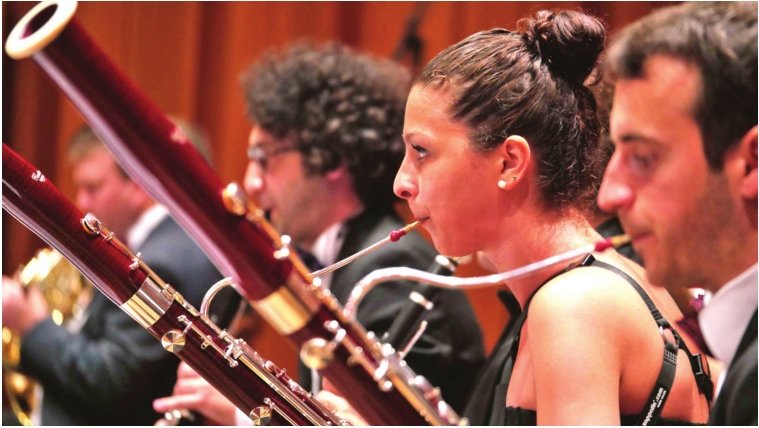
“Immigrants – we get it done.” The biggest applause line of the Broadway hit “Hamilton,” born in the “hope and change” era of Barack Obama, is about to infiltrate Middle America in the “DACA is dead” doldrums of Donald Trump — just in time. Maybe.
“Hamilton” dominates the 2018-‘19 Wharton Center season, announced this week, in more ways than one. It’s the biggest Broadway sensation of the adolescent 21st century, of course, but the show signifies much more than that.
Can “Hamilton” keep knocking down walls as fast as they go up? It has a stunning track record so far. The show has the requisite boffo Broadway beats, but the verse is etched in the sharp quill of hip hop and the cast is filled with people of color. A musical celebration of the brilliant, hustling Founding Father, “the poor boy from the Caribbean who made the country rich,” is the perfect emblem of immigrant moxie, even as National Guard units head for the borders.
“Hamilton,” which will run May 14 through June 2 of next year, will be a fitting capstone to a diverse season that blurs a lot of boundaries and moves Wharton farther than ever from the boxedin, parallel series of Broadway, jazz, dance, classical and traditional theater productions that dominated performing arts centers for a century. Earlier this month, Wharton Center director Michael Brand and his staff sat down with City Pulse to talk about the season and plans to present more topical and innovative drama on the stage along with Broadway blockbusters.
Hamilton: The Revolution
The ebullient, rap-infused energy of “Hamilton” is likely to read even more like a revolution in 2019 than it did in 2015.
Shortly after the November 2016 election, Vice President Mike Pence famously attended the show. When the curtain came down and Pence headed for the exit, Brandon Victor Dixon, the actor who played Aaron Burr, stood with the cast on stage and read a plea from “Hamilton’s” creator, Lin- Manuel Miranda, from “the diverse America who are alarmed and anxious that your new administra tion will not protect us, our planet, our children, our parents, or defend us and uphold our inalienable rights.”
President Donald Trump Tweeted that Pence had been “harassed” and demanded an apology, but the veep said he wasn’t offended. “If you haven’t seen the show, go see it. It is a great, great show,” Pence told Chris Wallace on “Fox News Sunday.”
It’s hard to top that kind of publicity. As a touring “Hamilton” heads to the heartland, Brand is ready for the show to suck the air out of the room for a while. He’s just happy that Wharton snagged “Hamilton” in its first touring year — no mean feat for a smaller market.
“It’s all people want to talk about, but what are you going to do?” Brand said.
Late May dates aren’t ideal for a big show, but Brand doesn’t think it will matter with “Hamilton.”
“You have to catch them between cities,” Brand said. “We never say ‘no’ to dates because if you do, that’s the way the trucks are going to go and you’re out.”
Before “Hamilton” blew out the wall between hip hop and Broadway, rock ‘n’ roll made a spectacular series of inroads into musical theater, going back to “Jesus Christ Superstar.”
The most recent mashup, “School of Rock,” coming to Wharton Sept. 18-23 was Broadway and Andrew Lloyd Webber’s first big foray into rock ‘n’ roll. Based on a 2003 Richard Linklater film starring Jack Black, it’s a mild take on the all-American pastime of shocking the squares, and “a huge family draw,” according to Brand. The show’s novelty on the Wharton stage will be the spectacle of actual fourth graders playing their own guitars and shredding their way, live, through the show’s battle of the bands.
“We’ve never had a show with a cast playing on stage that were kids,” Brand said. “They auditioned from all over and I was surprised at how much they played.”
Jack White aside, there isn’t much white bread in the rest of Wharton’s Broadway slate for 2018- ‘19. A wry revival of “Fiddler on the Roof” (Dec. 4-9), with new staging and choreography, chronicles the struggles of a Jewish family in Russia’s pale of settlement. The setting of “Anastasia” (Jan. 15-19), the Disney-fied retelling of the legend of Russia’s Grand Duchess Anastasia, takes place only a few steppes away. Another blockbuster revival, “Miss Saigon” (March 12-17) is set in the last days of the Vietnam War.
Even “Love Never Dies,” (Oct. 9-14) Lloyd Webber’s sequel to “The Phantom of the Opera,” the longest running Broadway show of all time, has an immigrant theme — of sorts. A decade after the events of “Phantom,” the Phantom is lurking underneath New York’s Coney Island, feeling at home with the freak show and “getting it done” in his own creepy way.
Spectacle will again be a big draw for Wharton’s Broadway series, from the Coney Island rollercoaster of “Love Never Dies” to the pop-up book staging of “Anastasia,” a deft mix of projections with physical props, to the helicopter of “Miss Saigon,” which Brand said is “even bigger.”
Black and white
A Hamiltonian display of blending and blurring is evident in Wharton’s performing arts series as well as the Broadway mainstays.
The most extreme example will be on display in vivid black and white when an April 10 gig mashes together two of music history’s most popular a cappella groups, Manhattan Transfer and Take 6.
Brand said the gig was expensive compared to getting just one of the groups, but it was impossible to resist such a bold combination of two disparate styles — and audiences. Take 6 is rooted in gospel and R&B and has a largely African- American following, while Manhattan Transfer juggles jazz, pop, fusion and funk in a razzle-dazzle style that appeals largely to white audiences, including listeners who otherwise might not be into jazz and funk.
Both groups have shelves groaning with Grammys and many hits. For their “summit,” they will perform together, not back-to-back, in a show of meta-harmony destined to fulfill Hamiltonian cravings for national unity.
With the nearby MSU Jazz Studies program holding down the fort for swing and bebop, Wharton is moving away from doing a straightup jazz series in favor of a slate of “variety events” ranging from the joyous Soweto Gospel Choir (Nov. 18) to a comedy and banjo music revue from two of the “Three Amigos,” Steve Martin and Martin Short (Nov. 4) to the bluegrass-and-beyond collective Dustbowl Revival (Nov. 1), which Brand described as “a young band, Bohemian, like a big soup — they’ve got everything.”
Even the most straight-up jazz event of the season, the Monterey Jazz Festival on Tour (March 24) is not so straight up. The concert will showcase two top young female artists, singer Cecile McLorin Salvant and trumpeter Bria Skonberg, both of whom wowed East Lansing audiences in recent years at the East Lansing Jazz Festival and the Wharton Center, along with a stellar band that represents the energy of youth, flexibility of format and infusion of estrogen that has helped to keep jazz alive well into the 21st century.
 In that same spirit, violinist Regina Carter will bring an Ella Fitzgerald tribute (Feb. 22) and, in a bow to the inexplicable ukulele mania that has swept the nation of late, the Ukulele Orchestra of Great Britain will appear March 19.
In that same spirit, violinist Regina Carter will bring an Ella Fitzgerald tribute (Feb. 22) and, in a bow to the inexplicable ukulele mania that has swept the nation of late, the Ukulele Orchestra of Great Britain will appear March 19.
The sleeper of the lot, in Brand’s view, is “Best of Bernstein’s Broadway” (Feb. 18), with powerhouse vocalist Morgan James.
James has a coterie of hard-core local fans who make it a ritual to drive to her appearances in Detroit, Chicago, Ann Arbor and the Traverse City Opera House.
She will be backed by a 60-piece orchestra drawn from the ranks of the Detroit Opera House, the Grand Rapids Symphony and the Lansing Symphony, led by a dynamic young conductor, Teddy Abrams, the maestro of the Louisville Orchestra and the youn gest music director ever of a major American orchestra.
‘We’ve never had a show with a cast playing on stage that were kids.’- Michael Brand Wharton Center Director
Wharton’s 2018-19 classical slate, by comparison, remains a bastion of tradition, led by pianist Efim Bronfman (April 2) and soprano supreme Renee Fleming (Oct. 18), the down-to-Earth diva known for tackling everything from traditional roles to avant-garde to jazz music. Fleming will also do a master class at MSU. The Czech Philharmonic Orchestra (Oct. 30) will bring a passionate cellist, Alisa Wellerstein, and a formidable maestro, Sovietborn Semyon Bychkov (conductor of the Grand Rapids Symphony Orchestra from 1980 to 1985.) It’s rare for Wharton get two touring symphony orchestras in the same season, but eastern European orchestras are more affordable than most, so the National Symphony of Romania will also perform at Wharton April 2. Two major dance troupes, MOMIX: Opus Cactus (Oct. 21), a fantasia of Southwest desert horizons, cacti and lizards, and Jessica Lang Dance (Jan. 24), will continue the Wharton Center tradition of supporting the liveliest art.
Hell or high water
The 2018-19 season also contains the kernel of what Brand hopes may someday become more of a full-blown drama series. The series name, “Illuminate,” is an unthreatening way of saying “fringe,” the word Brand prefers to use when he’s talking about his theatrical plans.
In keeping with current cultural and political vibrations, women are front and center. “The Other Mozart” (March 27) is the untold story of Mozart’s musical-prodigy sister, Nannerl, as performed by creator-actress Silvia Mylo in a fantastic white dress that looks like a shredded opera manuscript sewn back together into a 18-footlong, chiffon tunnel. “Promethea in Prison” (Feb. 27) turns the Prometheus myth into a vehicle for discussing the plight of women in prison. “I and You” (March 22 and 24,) is a love story centering on an athletic young man and a homebound girl who bond over the poetry of Walt Whitman.
It’s the kind of theater Brand would like to see more of at Wharton, but financially, such productions are hard to mount, unless one or more MSU academic programs are woven into the project.
“There’s a core audience here that wants to see more discussion worthy work,” Brand said.
Brand hopes for 2019-2020 to welcome the Abbey Theatre, also known as the National Theatre of Ireland, in town for a week, with a play at the Pasant Theatre.
“They’re very interested in coming here with a piece called ‘The Fall,’ that was written by students,” Brand said.

‘The Fall’ uses music, dance and storytelling to tackle another hot-button issue, the removal of public monuments to historical figures or eras that represent a shameful past to many people — in this case, a statue of British imperialist Cecil Rhodes at the University of Cape Town.
“It opened with great reviews at St. Ann’s Warehouse last month in New York,” Brand said. “They think they’re going to have enough interest to do a U.S. tour next year and we want to be on it.”
One or two nights at the 600-seat Pasant Theatre aren’t enough to defray all the costs, especially for travel, but the Wharton staff hopes to coordinate the troupe’s stay in East Lansing with work tied to various MSU curricula.
Brand said about half a dozen big donors are also interested in supporting such a series.
“It’s slow, but I think that 10 years from now, you’re going to see more of the kind of things you see in New York’s Fringe Festival or Edinburgh’s Festival Fringe,” he said.
Brand hasn’t given up on the National Theatre of Scotland’s acclaimed “Black Watch,” the story of a Scottish regiment’s tour of duty in Iraq, after two unsuccessful bids to bring the production to Wharton.
Like “Hamilton,” “Black Watch” uses every theater trick in the book to dramatize the continuity of history with current politics. The subject matter burns across national boundaries as easily as a flamethrower.

“It was an incredible production, on the trauma that happens to soldiers, having a hard time getting reclaimed into society,” Brand said. “You see these big Marines in the audience, just bawling at the end of it, just losing it.”
A proposed collaboration with Wharton’s Ann Arbor counterpart, the University Musical Society, fell through, owing to lack of a suitable venue. The show’s unique seating and lighting require an open area, like an armory or a warehouse.
But the man who landed “Hamilton” is not easily deterred. Brand said he is in touch with “an international broker for these kinds of groups, and he knows we want it. It’s going to come here, come hell or high water.”
Support City Pulse - Donate Today!
Comments
No comments on this item Please log in to comment by clicking here